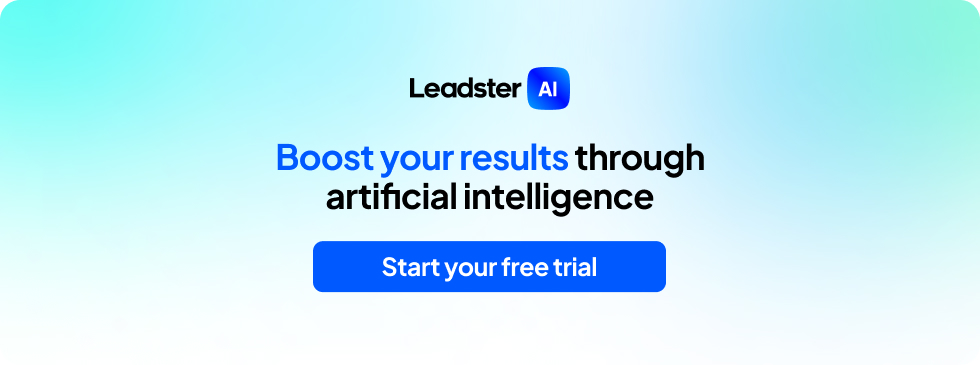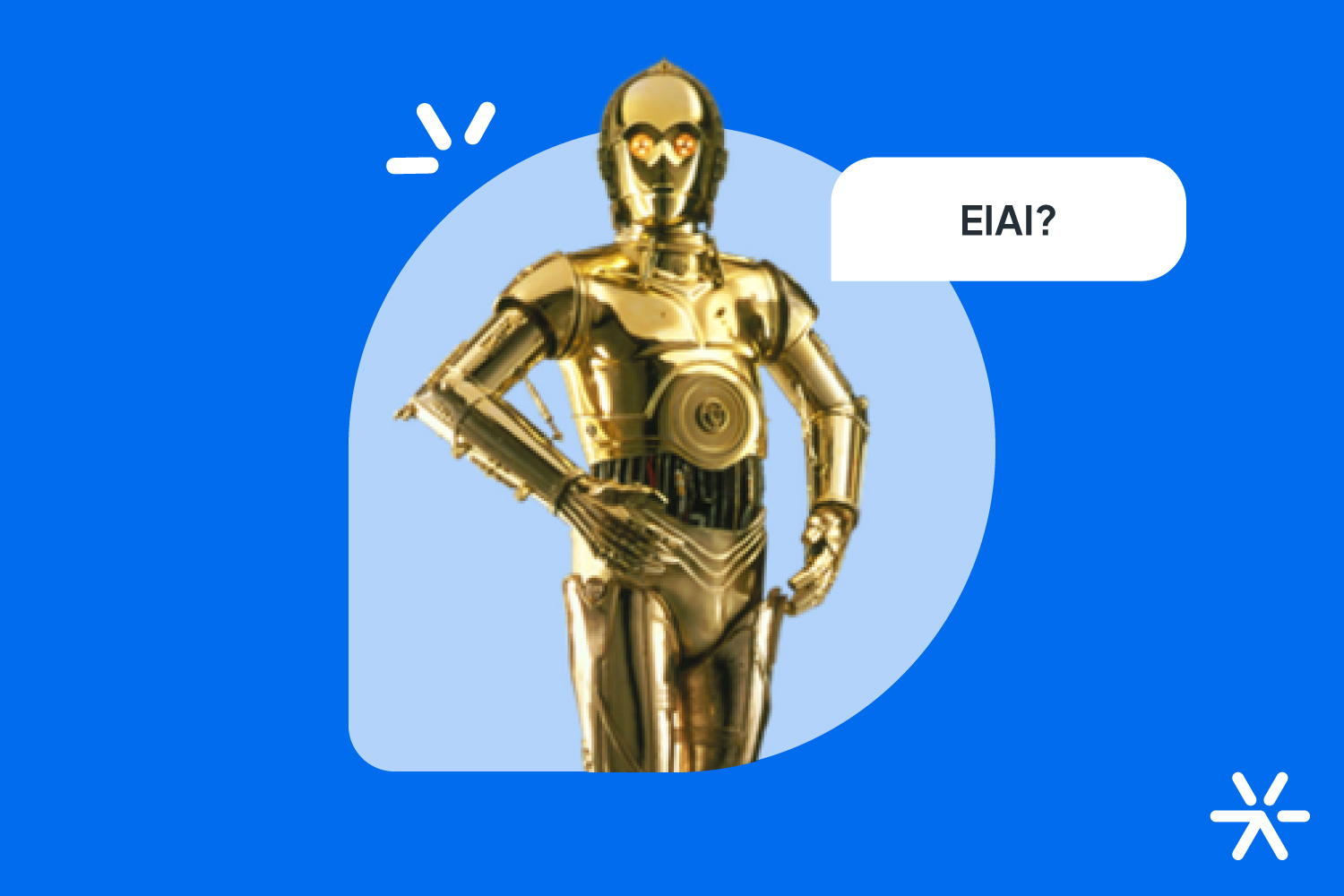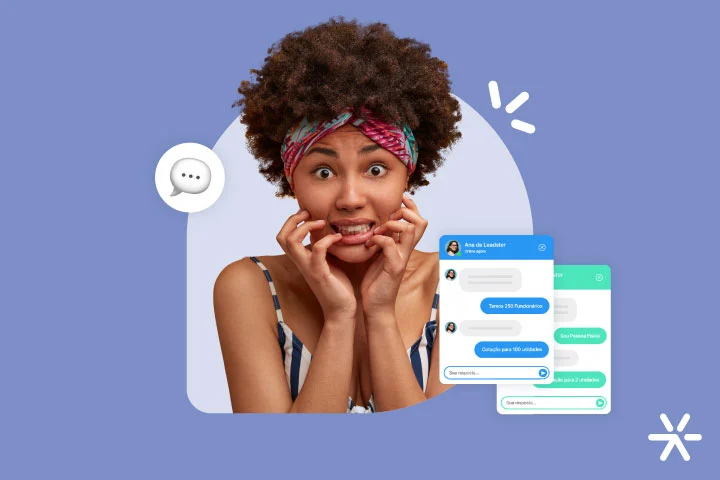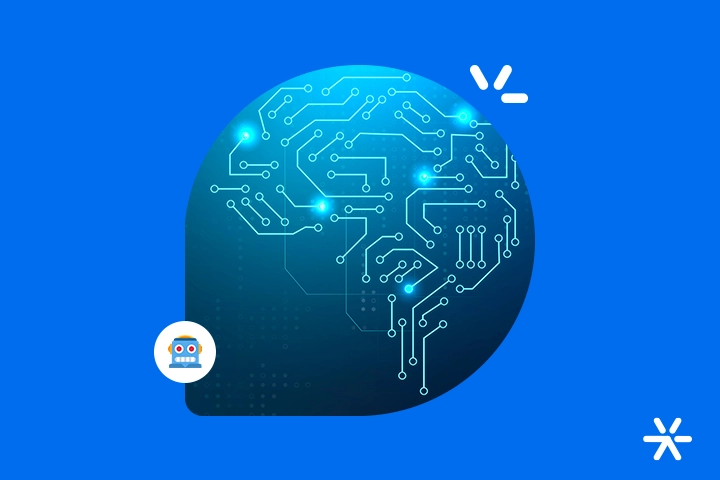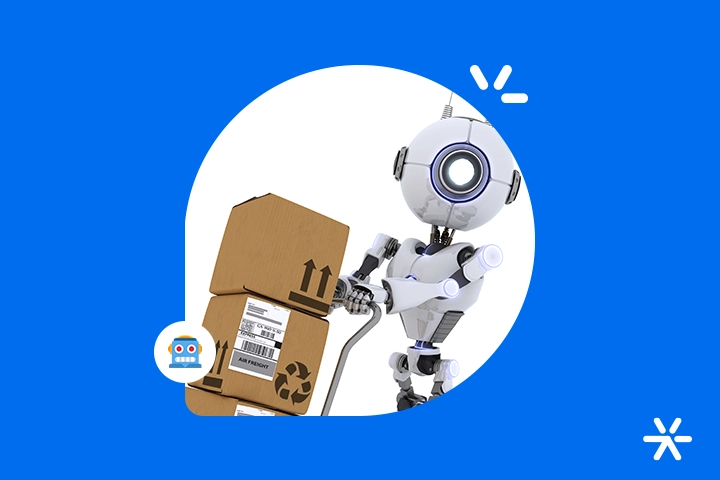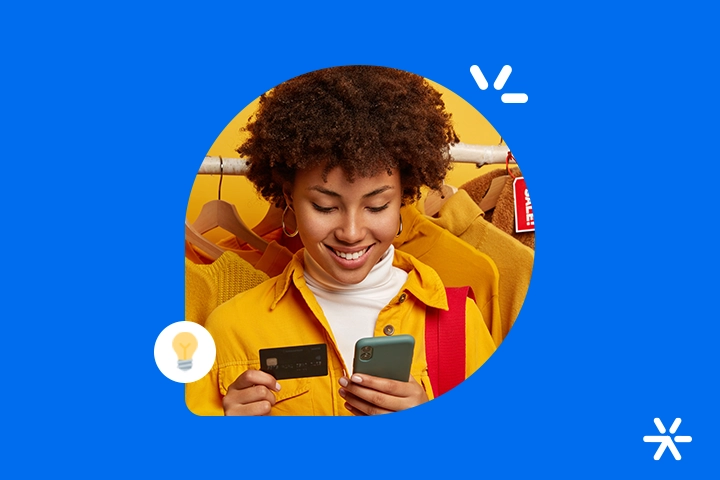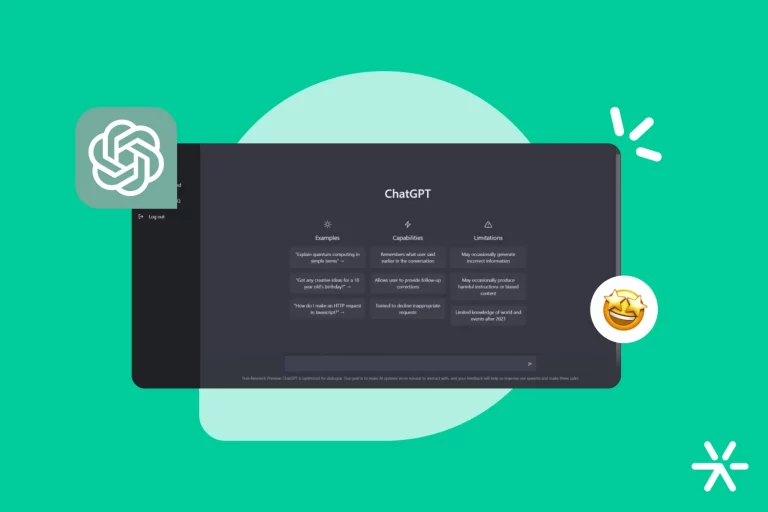AI content creation: how to do it?
Content creation is one of the main tactics of modern digital marketing to capture more and more leads that will become customers.
Back in 2010, when content marketing began to develop, many agencies and companies that work with marketing needed to explain to the world what this new type of advertising was, and what it did.
But today content has already dominated the world. Everyone knows that content creation is one of the most powerful currencies within various digital marketing strategies.
And something that has also been dominating the world, little by little, is the use of Artificial Intelligence to create this content.
It brings many advantages, especially in the scalability of your strategy. Suddenly, you find yourself free from needing to hire a veritable army of writers to expand your results.
But at the same time, AI content creation tools come with some limitations.
Today we’re going to talk about all this: how does content creation with AI happen? Follow me to learn about its advantages, disadvantages, the best techniques for production and 10 more examples of AIs working together.
Let’s go?
What are the types of AI?
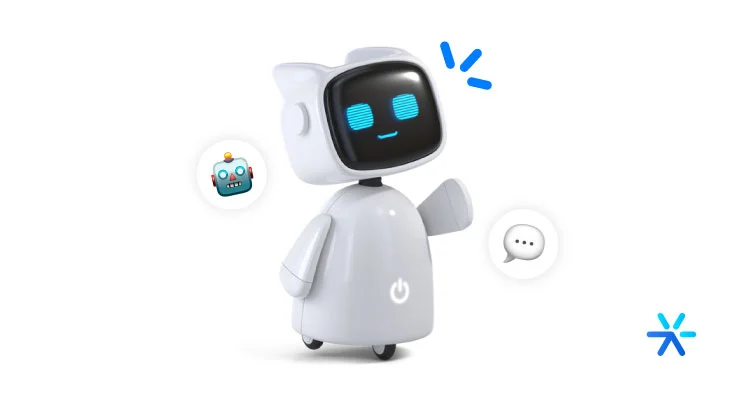
Well, before we start talking about creating content with Artificial Intelligence, we need to talk about the types of AI that exist on the market today.
This is important because, despite the technology being relatively new, there are already several types of tools that work in different fields within the marketing reality.
Choosing between these tools can be quite complicated. Especially if you’re not that familiar with AI.
The types of AI will determine what uses they can have within your strategy.
An example: Canva has a Generative Artificial Intelligence functionality, but it is just a support for the tool’s main functionality: creating posts for social media using the drag n’ drop model.
At the same time, the DALL-E 2 is more robust in creating images because it was made precisely for that. But it doesn’t create posts.
And another one that we will mention later in the text, AdCreative, makes entire posts and offers hundreds of variations of it. But she doesn’t create any images, and uses image banks to illustrate these posts.
Do you see how the same AI — generative — can have very large variations between them?
🤿 Dig deeper: What is Artificial Intelligence and How to Apply it to your Business
That’s why it’s important for us to open the text with this distinction. And starting precisely with the most popular AI model:
Artificial Intelligence for content creation
The creation of content with Artificial Intelligence occurs mainly through Generative Artificial Intelligence.
This AI is capable of creating completely original content that has never been seen before by anyone. All based on a database and prior training.
Originally, the first really powerful and disruptive generative AIs to hit the market were text and image AIs — specifically OpenAI’s ChatGPT and DALL-E 2.
But with the emergence of these AI models, others also began to be developed using their engines — the code behind them.
This provided us with very varied tools for content production. So varied that we will need to make a quick addendum here:
Text
ChatGPT is quickly becoming the most basic AI for text production.
This is because other products are already being created that go far beyond questions and answers.
These products already come with their own databases and produce content that is already targeted for a purpose.
For example: Jasper.ai specializes in producing texts for SEO and blogs. At the same time, Copy.ai is aimed at producing posts for social networks.
And so on. As you might expect, text AIs, along with images, are the most popular on the market today.
🚀 Go further: ChatGPT — A Complete Study – What it is and How to Use it in Digital Marketing
And speaking of images:
Images
Tools like Midjourney, DALL-E 2 and Stable Diffusion are Artificial Intelligences dedicated to creating original images based on user prompts.
For those who don’t know, you basically ask the AI to create an image with the parameters you want and that’s it: the image comes out.
We have a super interesting text about AIs for creating images published here on the blog. See this example created with DALL-E 2 with the prompt “a cat wearing heart glasses”:
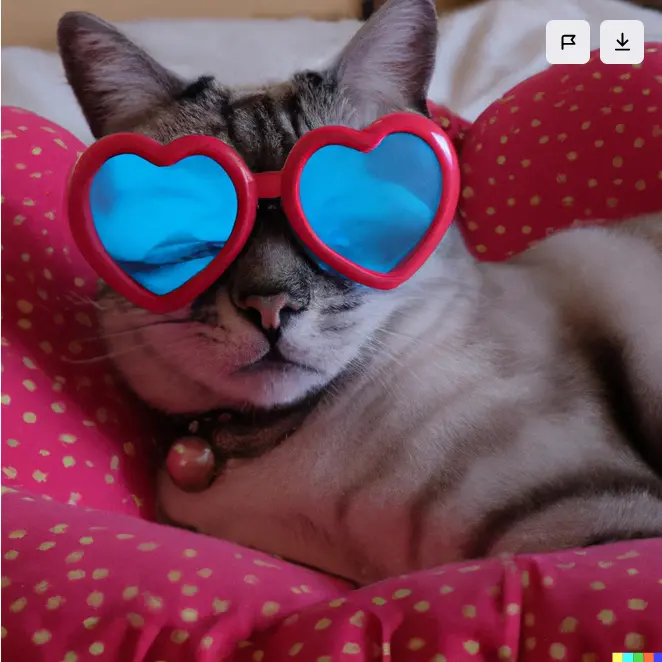
These AIs, however, only create the image. And depending on the service you choose, the results can be absolutely faithful (as is the case in the example) or completely disastrous.
Choosing an AI to create content based on images needs to be very well informed. The less processing power a tool has, the less faithful the results will be to the prompts.
Ready-made posts and ads
It is also possible to create entire posts and advertisements using Artificial Intelligence, including captions and titles.
The single most popular tool on the market today that delivers this result is AdCreative. And even it still presents some serious problems in the layout of the posts.
In any case, anyone who is in a hurry or wants to make some quick mock-ups can use the platform, which despite being limited, does what it promises.
Videos
It is also possible to create complete and completely original video tracks using Artificial Intelligence.
Tools like InVideo create complete scenes and videos using just prompts. You can even create videos with people talking and then use another AI, like Murf, to create the narration.
InVideo even offers the possibility of editing your videos using prompts. It’s as if you had a dedicated videographer, who does everything you ask and even changes it without any major problems.
The results are quite spectacular, even sparking real debates about the ease of creating deep fakes.
Artificial Intelligence for services
But as we were talking about at the beginning of the text, AI tools are not exclusive to content production.
Today, the first AIs focused on customer service are already being launched, with companies like Zendesk leading the market.
However, these AIs are still some way from completely replacing human agents.
Service chatbots that use AI can understand what customers are requesting, talk to them and direct them to resolve the problem, but only in specific cases and where there is training and database support.
It’s different, for example, from chatting with ChatGPT, which will always give you an answer to any of your questions.
We are still a little far from finding AIs that are truly capable of providing care completely on their own, and there are many reservations about their ability to one day reach that level.
To get there, the data capture technology needs to advance a little further and the AI language model also needs to make some leaps.
Artificial Intelligence to generate leads
Leadster is the first chatbot platform focused on lead generation to have a native integration with ChatGPT.
The process is quite simple. When you activate Leadster, the platform will start measuring visits to your website, seeking to list which pages have the greatest visibility.
This lasts about 10 days. After this period, through the platform itself you can see which are your traffic champions.
In addition to this categorization, Leadster will offer you smart call suggestions created with ChatGPT for these pages.
See the print to understand better:

Each little bubble on the left is a smart call that ChatGPT created , and that you can use on your website whenever you want, just by creating your chatbot flow.
The great advantage of using ChatGPT to generate leads is the practicality of not having to create different calls for all your pages with the most traffic, which takes time and even drains creativity.
And this point is precisely what cannot be missed: personalized marketing approaches are proven to generate more leads .
Now you can maintain customization without having to do all the hard work of understanding the content of every page and then creating your callouts individually.

What are the advantages and disadvantages of using AI to create content?
We’re already talking a little about the advantages and disadvantages of creating content with Artificial Intelligence, but I think it’s worth going deeper.
Mainly because, if you are guided by the websites of companies that work with AI, you will not see any limitations.
But the reality of content production is different. AI can bring great advantages that allow you to grow a lot in production, but it also has some limitations that cannot be ignored under any circumstances.
So, now see a balanced and real analysis of what AI can deliver in content creation, and what it cannot:
Benefits
Most of the advantages of AI are related to saving time and resources when creating content.
Today, this is your strong car. There is nothing that AI can do that a dedicated human expert in content production cannot do.
The problem is that we don’t always have an expert at our disposal . Or when we have it, we will always need more to be able to produce more content.
AI allows creatives to focus on what they are really good at: exercising their creativity. This results in less stress at work and more free time to tackle more projects.
And of course: to always deliver the best result.
But I don’t want to give spoilers. Follow me on this quick list of the advantages of AI:
Speed in searching
Any writer has been through this: you arrive at work, open your email and a new brief appears: write a 1500-word text about the LGPD . Delivery for noon. Good luck.
This happens and it’s not a small thing. The same thing with designers: I need a complete ads package yesterday and that’s it. Good luck again!
Research is a fundamental part of content production, no matter the media, no matter the type of content.
Copywriters research the format they will produce and the subject they will write about. Designers research references. Providing less time than necessary for these surveys impacts the quality of delivery.
AI allows this process to be accelerated, even if it is not perfect. Writers can use ChatGPT to understand who the content leaders are in a certain segment, for example.
And designers can use generative image AIs to create a mood-board of references for a campaign in just minutes.
Everything quickly, as the routine in agencies and marketing departments requires.
Simplicity in production
Production itself is also greatly accelerated with AI.
Let’s go to the design example again. Let’s assume that the brief asks for 5 illustration-style images, which look like they were actually drawn on paper.
To do this work, the designer will actually need to draw these images, which takes time and is not necessarily part of a graphic designer’s job — it is something more suitable for illustrators.
AI speeds up this work by delivering images like this in a matter of minutes. In fact, not even minutes, in the plural: most people create it in a few seconds.
There are several production jobs that would take a long, long time to do: a complete animation of these illustrations, for example, could take weeks to complete — 5 animated images require several frames for each one.
Work is easier with AI, which, although it cannot do everything, opens up possibilities for materials that would previously have been unfeasible with a small team.
Scalability
What we are talking about in these two items has a name: scalability.
This is what AI can give you by accelerating processes that would previously take a long time: the possibility of growing and scaling.
If the designer no longer needs to run around looking for illustrations to apply to a campaign, he can create 20 pieces in the time frame he would create just one.
If the writer can research while spending only half the time she would otherwise, she can produce twice as much.
This means that the marketing department or agency will not have anything to do for most of the day. On the contrary.
With the help that AI brings, it is possible to reach many more customers. Customers who previously could not be served due to lack of structure or lack of staff now can.
Reasonably faithful results
Creating content with AI will deliver very usable results for your team, although not always.
This is a point we need to talk about before talking about the disadvantages because it is very difficult to understand the role of AI in the production of any type of material.
There are people who think that AI will always deliver the best result according to the prompt: in other words, the responsibility is yours .
And there are also those who think that the prompt doesn’t matter: you can write whatever you want and the AI will never be able to deliver truly accurate results.
This is a gray area because neither of these two statements is 100% correct or 100% wrong.
AI will not deliver 100% faithful results on any occasion, regardless of the prompt. But at the same time, this does not mean that the results are not satisfactory.
This should be your guide when working with AI: it doesn’t finish the job overnight. The results are good enough to help you achieve your goals , whatever they may be.
But it is still the creatives’ responsibility to review and apply the results of the AI’s work to the piece being built.
Disadvantages
Artificial Intelligence also brings some disadvantages that need to be understood before you start production.
These disadvantages, however, will not make production unfeasible. You just need to keep an eye on them to understand what extra you will need to do after production.
I made a quick list here for you to follow. Let’s go with me?
Extensive reviews
Everything done with Artificial Intelligence needs review. Absolutely everything.
Especially in text. ChatGPT’s own textual production, which is the best AI tool for this purpose, still brings some classic problems that probably won’t go away anytime soon.
Inventing fonts is one of those problems. ChatGPT rarely says “I don’t know”. Its purpose is to deliver a text , not necessarily correct information.
If the text comes close to the truth and is in line with the prompt, ChatGPT will often hit the spot, say goodbye, thank you! and move on to the next one.
Checking facts, changing very generic structures, inserting specific information about your company and your persona: you need to do this manually.
Of course, ChatGPT can give you something that checks all these boxes, but it still has its own style of language that is very difficult to change with prompts alone.
The same goes for images: they are not ready. They may be beautiful and in line with what was imagined, but some details — especially hands, eyes, faces and textures — require extra treatment from an experienced designer.
Content standardization
Another problem with Artificial Intelligence is that everything looks like AI.
This is also even more complicated with text. ChatGPT has its own style , and even if you describe your persona in the prompt and ask for a personalized message, it will still write how it does.
Sometimes you can even ask ChatGPT to create the persona and then write text aimed at them and the style will still look like AI.
For images it’s the same thing, but less obvious, since the elements are mainly visual and many tools allow you to style prompts visually as well — you choose styles, colors, scenes, etc.
Anyone who uses AI to create content in a very extensive way will encounter this problem of standardization. Without revision, everything will become very same and generic.
Difficulty coming up with the “big idea”
AIs can give you a lot of ideas, but the big idea is still 100% the responsibility of humans.
But what exactly is the big idea ? It’s one that no one has had yet. The one that is so related to your business and your segment that it seems obvious. It’s the idea that will generate more leads and sales than you can handle.
AI, due to its limitations and because it does not truly understand your business and your audience, ends up remaining very much on the surface of creativity.
And that surface is not necessarily bad. It works for blog post ideas , ad ideas on Social Ads and Google Ads .
But for large campaigns, which require greater creativity, it is difficult to rely on AI.
The best Artificial Intelligence tools for creating content
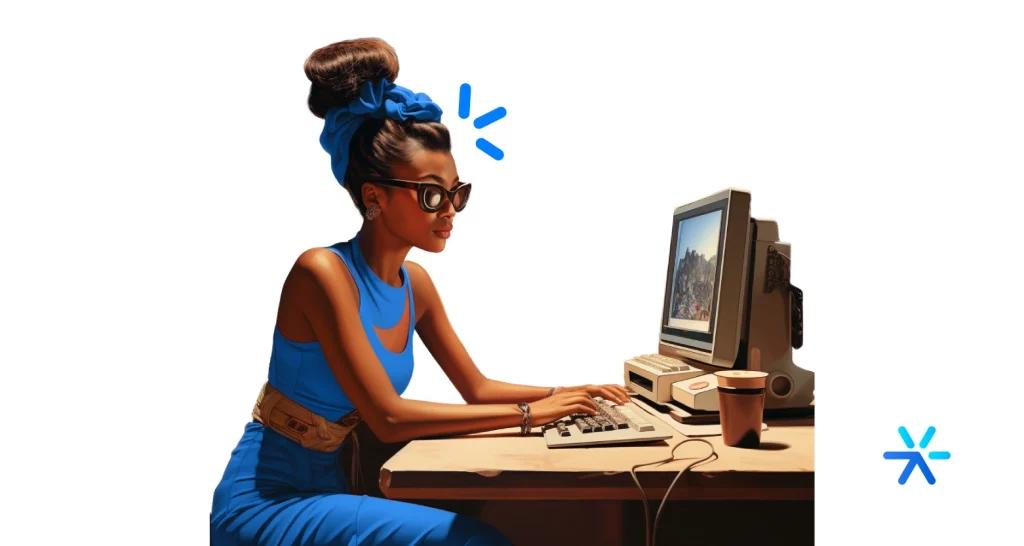
Well, we are reaching the end of the text and we have already talked about everything that AI is capable of delivering, what it cannot and what its types are.
And of course, we also talked about the main advantages of using AI in your production. This part alone must have made you quite excited, right? Being able to serve more clients and earn more is a great incentive for agencies.
And reducing your marketing team’s workload while speeding up production is wonderful for smaller businesses on a tight budget.
But we need to talk now about the main thing: how to start creating content with Artificial Intelligence?
I made a quick list here with 10 AI tools that will help you in this process, but with an extra: each item features two tools that, together, can produce practically any type of material.
We’re talking here from images and texts to complete ads, including videos, narration, lead generation and customer service.
Let’s go?
ChatGPT and Midjourney (or DALL-E 2)
The basic package of Generative AI is text + image. Often, specifically ChatGPT and an image generation tool, such as Midjourney and DALL-E 2.
I’m highlighting these two tools because today, on the market, they are the ones that deliver the most faithful results in image generation.
There are other more specific tools, some even more advanced — such as Stable Diffusion — but to get the best results in 2024, these two are the most recommended.
ChatGPT works by creating the text you need, including the prompt text for the AI that will generate the images.
You can, for example, ask ChatGPT to deliver you a ready-made post, including the image prompt, with copy and a publication date.
And then put the prompt in the AI that will generate the image. Everything ready: you have a post practically ready using Artificial Intelligence.
There’s not much to explain here because these tools are absolutely simple. You will need to experiment, use them a lot, to get the best results.
Here, practice speaks louder. Get started today!
AdCreative for ads
AdCreative is a tool that creates ready-made ads, with the text you need , your logo, your brand colors and a background image.
See the example below:

But realize that the results are still very limited. The interesting thing about the platform is that, to deal with this limitation, it delivers not one or two results, but more than 100 ads for each prompt.
This is a great tool to test, but it is a little expensive: its most basic plan costs around R$600 per month.
Jasper.ai
Jasper.ai is a tool that mainly helps the production of texts for SEO with Artificial Intelligence.
Previously, its activities were entirely focused on producing texts for SEO. Today the story is a little different.
This is one of the areas that is developing the fastest in the world of digital marketing , but Jasper didn’t stop there.
Today, he brings a huge toolbox for creating and content with AI, including positioning himself as a co-pilot for marketing teams.
With Jasper’s complete solution, you produce copy, entire texts, have a research partner and even generate images.
In the Artificial Intelligence market today, Jasper stands out as one of the main content creation tools. It is expensive, but teams that make this investment will certainly see a return.
Copy.ai and Canva
ChatGPT and DALL-E 2 for creating social media posts is a good idea, but these AIs will still take some work and require a good amount of review and extra work from reviewers and designers.
And who doesn’t have a writer, proofreader or designer to work with? And what about those entrepreneurs who are just starting out and aren’t ready to invest in a marketing team?
In this case, Copy.ai and Canva help a lot.
Copy.ai is a platform focused exclusively on posts and advertisements. Its AI is trained for this purpose, which results in more optimized results for that channel.
And when it is used with Canva — which even has a native image generative AI — you solve the main problems of working without a team: it is possible to generate the post text, the post itself and the post image.
InVideo and Murf
But is it all just thinking about posts? Text and image? And how are the videos?
Don’t worry: if your main activity is in audiovisual, I have two great tools here for you.
InVideo is an AI aimed at producing short films. It is also generative: you just need to enter the prompt and see the final result.
In conjunction with it you can also use Murf , which is aimed at producing voices using AI.
With this, you can create video tracks and combine them with a narration, resulting in great materials for ads anywhere.
On YouTube, for example, this strategy works really well and is already being applied.
Leadster and Zendesk
Zendesk is already starting to use AI to support customers .
Work is still going slowly. Today, Zendesk’s AI can handle basic customer transactions, but it is not yet 100% prepared to completely replace a customer service department.
But in any case, simple requests can be resolved by conversational AI or even through the intelligent chatbots that the platform can create.
And speaking of chatbots, we also need to talk about Leadster, the first Conversational Marketing platform with AI in Brazil.
We already talked about this above in the text, but it’s worth revisiting here. With Leadster, you can track which pages are most visited and receive smart call recommendations produced by ChatGPT.
With this, you gain more visibility on your website — with the separation of the most read pages — and you can be sure that the chatbot calls are the best possible, since our AI actually reads these pages with the most access.
I hope this text helped you a lot to understand how creating content with AI works. It is making huge leaps forward, and understanding what it does and doesn’t do is essential to producing increasingly better results.
